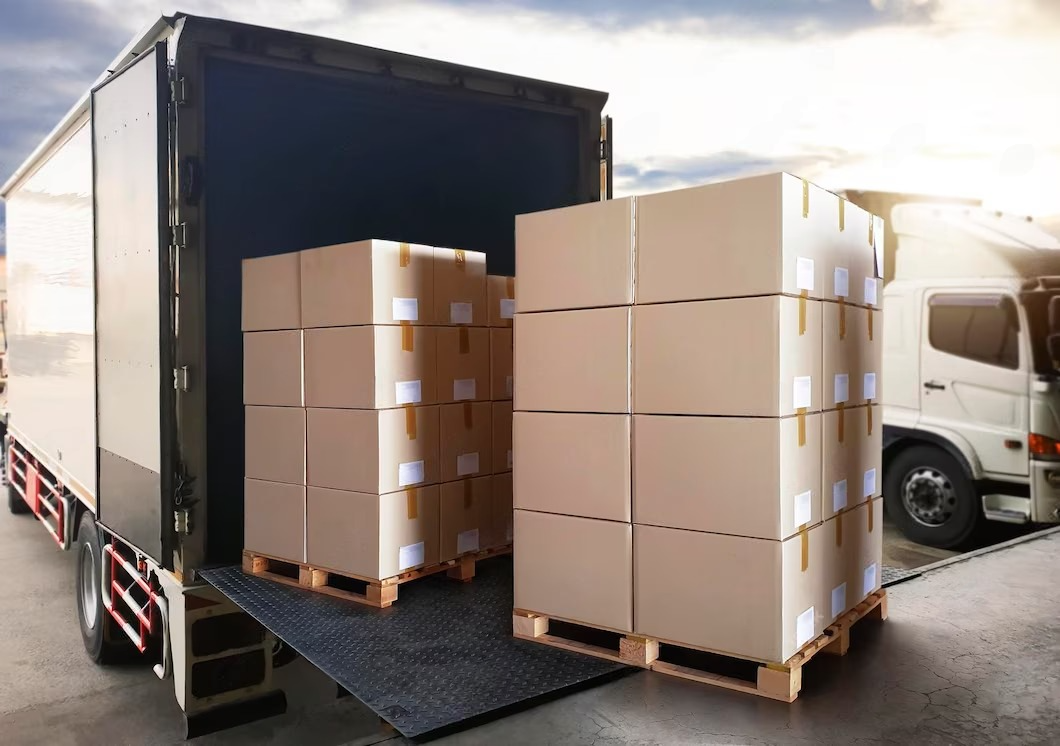Be your Logistics Department in China
Customized logistics solutions, your logistics expert in China
Customized logistics solutions, Shipping from China to the World
Tel:+8613424475220 Email:info@viputrans.com 
Understanding the importance of weight in product shipping is crucial. There are two types of weight, net weight, and gross weight, that are often discussed in shipping. This guide aims to clarify the differences between these two types of weight and their significance in the shipping process, addressing common questions that arise.
Net weight refers to the total weight of your cargo, excluding the weight of the container. It is commonly seen in product packaging and is an important factor to consider when shipping goods.
The gross weight is the total weight of the products and their packaging. This includes the weight of the liquid or product itself, along with the weight of the bottle, can, carton, or any other packaging material. When shipping in a container, the gross weight also includes the tare weight.
Here are some key distinctions between gross weight and net weight:
-Gross weight includes the weight of the goods, packaging, and container, while net weight only includes the weight of the goods.
- Gross weight takes into account the weight of the packaging, but net weight does not.
- The calculation of gross weight can vary depending on the mode of transport, while net weight remains constant across all transportation methods.
- Gross weight is determined by adding up the individual weights, while net weight is obtained by subtracting the tare weight from the gross weight.

To calculate the gross weight, simply add the net weight of the product to the tare weight of the container. This will give you the total weight of the product and its packaging.
The formula for calculating gross weight can be written mathematically as:
Gross weight = Tare weight + Net weight.
In order to determine the net weight of a product, you need to first weigh the gross weight of the product and its packaging. Then, remove the product from its container and weigh the container separately to find the tare weight. After that, you can calculate the net weight by subtracting the tare weight from the gross weight.
The mathematical formula for net weight can be written as follows:
Net weight = Gross weight – Tare weight.
To determine the gross weight of your product, simply add the weight of the empty container to the net weight of the product. For instance, if the net weight is 10,000 pounds and the container weighs 50,000 pounds, the gross weight would be 60,000 pounds.
Weight breakpoint refers to the maximum weight at which an object or structure can support itself without breaking or failing. It is an important concept in engineering and construction, as it helps determine the safety and structural integrity of a design. Knowing the weight breakpoint allows engineers to make informed decisions about the materials and construction methods that will be used to ensure that a structure can support the intended load without failing.
A weight break-point is the particular weight a shipment gets to, to qualify for bulk discount rates.
It is also referred to as the weight threshold.
It is mostly applicable to less-than-truckload (LTL) shipments.

The tare weight is the weight of the container or packaging when it is empty. It is also known as the unladen weight. Tare weight is used to calculate both the net weight and gross weight of products. Subtracting the tare weight from the gross weight gives you the net weight, and adding the tare weight to the net weight gives you the gross weight.
Net weight is the weight of a product without any packaging or additional materials. Gross weight is the total weight of a product including its packaging and any additional materials. Tare weight is the weight of the packaging or container without the product. The relationship between these weights is that the gross weight is the sum of the net weight and the tare weight. In other words, gross weight = net weight + tare weight. These weights are important for shipping, packaging, and determining the true weight of a product.
To calculate the net weight or gross weight, you need the tare weight and vice versa.
Net weight = Gross weight- Tare weight
Gross weight = Tare weight + Net weight
Tare weight = Gross weight – Net weight
Understanding the tare weight of your products is crucial for accurately calculating shipping expenses based solely on the weight of your products. Without the tare weight, it is impossible to determine the gross weight of your shipments. Additionally, knowing the tare weight of shipping containers is essential for selecting the appropriate container for your shipment.
Net weight takes into account tare weight when calculating freight costs. Tare weight refers to the weight of the packaging or container holding the goods, and it is subtracted from the gross weight to determine the net weight of the goods being shipped. This net weight is used to calculate the freight costs, as it represents the actual weight of the goods being transported. It's important to consider all three weights - net, tare, and gross - when determining shipping costs.
The term "CWT" stands for hundredweight, a unit of weight measurement commonly used in less-than-truckload shipments. Charges for these shipments are typically calculated per hundredweight, meaning that the total cost is determined by the weight of the shipment. It's important to note that the value of a hundredweight can vary depending on the continent you are in. In the United States, the CWT value is 100 pounds, while in Britain it is 112 pounds. This difference in value leads to the distinction between a "short hundredweight" and a "long hundredweight." The concept of the hundredweight was created to establish a standard unit of measurement for international trade.
When calculating freight charges using CWT rates, there are several factors to consider. These include the weight of your cargo, as CWT rates are typically used for less than truckload shipments. Additionally, the rates are structured so that the amount you pay per CWT decreases as the weight of your shipment increases. It's important to consult the CWT scale and select the appropriate weight break-point in order to accurately calculate your freight charges.
See the sample CWT rate scale below, notice how the weight features:
| Lbs | $ |
| – | 55.00 |
| LTL | 24.56 |
| 500 | 21.34 |
| 1000 | 15.36 |
| 2000 | 11.25 |
| 5000 | 7.50 |
| 10,000 | 4.99 |
| 20,000 | 3.69 |
To calculate the freight charge:
I. You first need to figure out which weight break applies to your cargo weight.
II. Then divide the total weight of your shipment by 100 to get your hundredweight
III. The next thing to do is to multiply the number you get by the rate applicable to your shipment’s weight.
This is an abbreviation used in determining less-than-truckload carrier rates.
The two letters and figures that make up the abbreviation stand for something individually.
i. L stands for the numerical operator, ‘less than.’
ii. The number 5 is the multiplier, i.e., the number by which you multiply
iii. C stands for the Roman numeral Centum, which means a hundred. It is the number to be multiplied.
From this definition, L5C translates as, less than 5 x 100.
It can also be written as <500.
The term "CBM" stands for cubic meters and is determined by the measurements of the shipment. One cubic meter is equivalent to 1 kilogram.
In order to determine the per hundredweight of your shipment, you should start by finding out the original weight of the shipment. From there, you can divide the shipment weight by 100 to calculate the per hundredweight.
In order to calculate the total gross weight, it's important to include not only the weight of the product and its packaging but also the weight of the transport vessel and any fuel that is used. Additionally, the total gross weight includes the weight of the passengers and crew on the vessel.
When it comes to freight rates, the weight of your shipment is a crucial factor that freight brokers use to determine the weight breakpoint for your shipment.
The weight that needs to be listed on the bill of lading is the cargo's gross weight, which is different from the container's gross weight. The cargo gross weight includes the weight of the product and any packaging attached to it, such as boxes or cartons. It does not include the tare weight of the shipping container. The container gross weight is the sum of the cargo's gross weight and the container's tare weight, while the container net weight is the weight of the packaged cargo in the container without the container's tare weight.
The cargo gross weight, featured on the bill of lading, is the weight of the container's net weight and packaging. This weight is important to include on the bill of lading because it can impact the pricing of goods. Different shipping lines may identify the gross weight in various ways on their bills of lading, but it all refers to the cargo's gross weight.
Name of Line | Heading in Bill of Lading |
| Maersk Line | Weight |
| MSC | Cargo Gross Weight |
| CMA-CGM | Cargo Gross Weight |
| Hapag-Lloyd | Gross Weight |
| Cosco | Gross Weight |
| Hanjin Shipping | Total Gross Weight |
| Safmarine | Gross Weight |
| NYK | Gross Weight |
| MOL | Gross Weight |
The answer to the above question is no. Gross weight and volumetric weight are two different measurements. Gross weight refers to the weight of the cargo and packaging, while volumetric weight is determined by the dimensions of the cargo. It's important to know the volumetric weight because lightweight goods can take up more space than heavier ones, and heavy goods in small packaging can take up less space on a shipping vessel.

The chargeable weight is the weight used by the shipping company to calculate the cost of your shipment, taking into account both the actual weight and the dimensional weight of the package. This means that the chargeable weight could be either the gross weight or the volumetric weight, whichever is greater. It's important to note that the chargeable weight may not always be the same as the gross weight, as it also takes into consideration the size and dimensions of the package. This information is typically included in the invoice provided by the shipping company.
The weight of a shipment is a crucial factor in determining shipping costs. The net weight refers to the product's weight outside of its packaging, while the gross weight includes the weight of the packaging. For expedited shipments, weight and distance are significant factors in determining shipping costs. Additionally, for air freight shipping, both the shape and weight of the shipment impact the cost. The dimensional weight is also important in air freight, as it is determined by the dimensions of the product and the space it would occupy.
Airlines are careful to limit the number of bulky parcels on each plane to ensure safe and efficient transportation.
Understanding the weight breakpoint is crucial when calculating CWT rates. If a shipment's weight falls in a lower rank weight group but not up to the higher rank, the CWT rate can be determined using the higher weight breakpoint. The deficit weight is the difference between the shipment's actual weight and the higher weight rank. The deficit weight charge is the amount your shipping company will charge you for this deficit weight. To better grasp this concept, refer to the CWT rate scale provided below.
| Lbs | $ |
| – | 55.00 |
| LTL | 24.56 |
| 500 | 21.34 |
| 1000 | 15.36 |
| 2000 | 11.25 |
| 5000 | 7.50 |
| 10,000 | 4.99 |
| 20,000 | 3.69 |
In the CWT rate scale, shipments weighing between 500 lbs and 1000 lbs are charged at a rate of $21.34 per hundred pounds. However, if your shipment weighs 950 lbs, it may be more cost-effective to calculate the charge using the 1000lb rate. This would result in a deficit weight of 50lbs, which would incur an additional charge of $55. It's important to consider deficit weight charges in order to ensure you are getting the best price for your shipments.
Knowledge of gross weight and net weight is crucial, especially for large shipments, as it allows you to calculate shipping and production costs. Understanding these weight types also helps in determining the most suitable packaging or container for your product. Additionally, knowing the net weight and gross weight helps in determining the weight of your shipping container and ensures accurate information on your bill of lading. Familiarity with these weight types also enables shippers to comply with shipping regulations and understand invoices from freight brokers, ultimately allowing for better estimation of shipping costs.
Understanding the relationship between volumetric weight and gross weight is crucial when calculating shipping costs from China. The size and weight of packaging materials, as well as how products are arranged inside the boxes or cartons, can all impact the chargeable weight and ultimately the cost of shipping.
Copyright © 2003-2025 VIPU Supply Chain Logistics Co., Ltd. | All Rights Reserved
LOGISTICS | E-COMMERCIAL FULFILLMENT | ABOUT US | CASE | NEWS | VIDEO | CONTACT US
We will find the fastest or the cheapest way for your shipment. Please specify: where from, where to, what to ship.